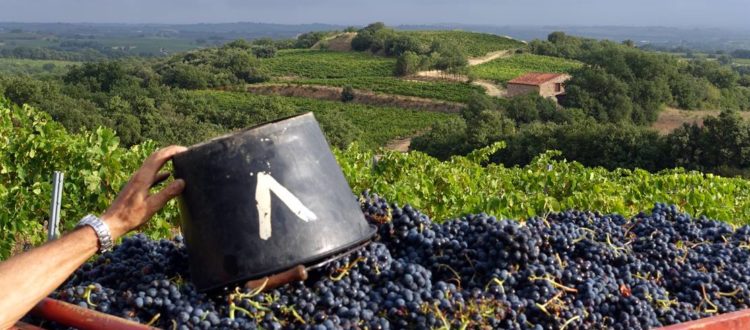Roussillon: 2018 – A Qualitative Vintage
The perfect conditions were met to foster a 2018 qualitative vintage: a dry winter, followed by a wet spring counterbalanced by the winds of the Tramontane, and a summer punctuated by heat waves, yet tempered by ongoing water intakes.
A positive outcome for the Roussillon vineyard and its producers who have therefore welcomed the return to normal production volumes, after the historically low volumes of the 2016 and 2017 vintages.
An intense but balanced climate
Following a dry winter, the Roussillon vineyard has been well-watered by rain during the spring season, with 262 mm/m2, a 42% increase from the documented average. The rainfalls allow the replenishment of the water reserves in the soil and provided the hydric conditions conducive of the healthy growth of the vineyard during the vegetative cycle.
Spring rainfalls have also forced the winemaker to a rigorous diligence commanding the tracking of the state of the sanitary condition in the vineyard, in order to contain phytosanitary pressure. Fortunately, the Tramontane, a powerful northwest wind originating from the mountain ranges and blowing towards the Golfe du Lion, played an instrumental role in the natural remediation by drying over the soil after each rain episodes. But beyond these natural factors, it is truly the know-how of the winemakers that has, despite this forgiving spring, preserved the sanitary condition of the vineyard.
The replenishment of the water reserves, combined with relatively low temperatures during the spring season, have withstood the intense heat in August, and ensured a relatively normal growing cycle, from budburst to harvest.
Due to the absence of hydric stress, the vegetation thrived and allowed good grapes and leaves balance.
Maturity has developed normally and the harvest of white and rosé grape varieties have succeeded each other at a steady pace from the end of July.
As for the red grape varieties, the cool nights have slowed down the kinetic maturity, delaying harvesting, and putting the nerves of the winemakers to the test.
From early September, the average night and morning temperatures have favored optimal ripening of the phenolic compounds of the grape, while preserving their acidity content, and the freshness of their aromatic profile. Depending on the areas, the harvest of the red grape varieties has started from one to two weeks after the end of the picking of the white grape varieties.
The harvest season for the majority of the dry wines has thus spread over an especially long period, from the end of July to early October, whereas for the fortified sweet wines (“VDN” =Vins Doux Naturels) and the red grape varieties at an altitude above 350m, the wait lasted until Mid-October.
A promising vintage
White and rsé dry wines, as well as the fortified Muscat de Rivesaltes (VDN), have soon developed a delicate aromatic profile, evoking floral and fresh fruit notes.
The first tastings of red after devatting revealed wines that are rich, textured and supported by a refreshing acidity. A profile enhanced by the malolactic fermentation, which provided an additional layer of intense and precise aromas.
The vintage 2018 shows a great potential with an aromatic complexity that is simultaneously youthful and profound, as well as a smooth and elegant texture marked by ripe and velvety tannins. It illustrates perfectly the respect that the winemakers carry on in the vineyard, fully committed to revealing the identity of the diversity of their terroirs.
his highly qualitative vintage is distinctive from the earlier ones in its moderate, yet more representative of the normal, production volumes, after a 2016 vintage historically low in Roussillon, and a 2017 vintage characterized by modest production volume across the Mediterranean coast.
2018 may become one of the greatest vintages expressed by the Roussillon vineyard!



